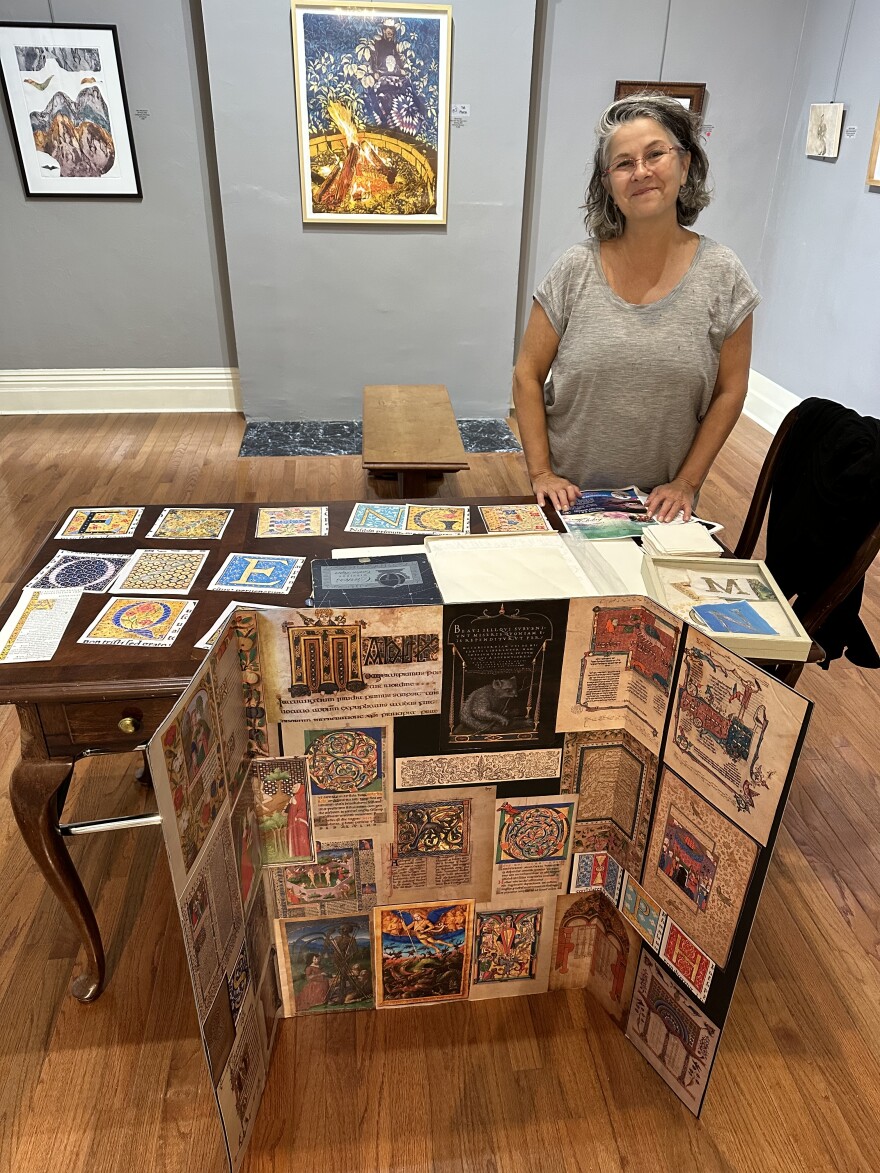Note from the producer: this is the premiere of the third season of a series on WYSO called Studio Visit. This season, I will focus on artists who regularly work with collaborators or, alternatively, have creative partners in their families who influence or participate in making art.
The featured artists will use various media, from photography to sculpture. Each segment will feature artist collaborators and include a brief biography, a sound-rich scene of a visit to their studio, and an interview about their work and how they connect creatively.

A modern-day scriptorium
Books were rare and precious before the printing press was invented in 1436. In Europe, religious texts were hand-copied by monks who gathered in a scriptorium, or writing studio, in a monastery.
The monks decorated the text with intricate designs, richly colored and gold-leafed, to fill the margins of the pages. These books are known as illuminated manuscripts.

A new art project by local artist Leesa Haapapuro aims to create a modern-day illuminated manuscript.
“The more I learn about them,” says Haapapuro, “The more interesting they are. It’s fascinating, and I want to share that with people.”
Haapapuro imagines this new illuminated manuscript as a large collaboration, the combined work of many artists, much like the monks in the monasteries. In the hopes of recruiting participants, Haapapuro has been teaching local arts groups old methods like gold-leaf and hand-printing block letters.
“It's really important that the ink makes this 'scritchy-scratchy' sound because if you get too much ink on it, the print will get all gloppy, and if you don’t have enough on it, it won’t be an even print,” she tells the class of artists.

The printed letters will be collaged onto large pages that contain lines of a poem by 20th-century poet and pediatrician William Carlos Williams. Artists will then finish by decorating the entire page.
“One of the things I love about these medieval manuscripts is that sometimes the imagery has nothing to do with the text. It's just bizarre and meant to make you remember that page." Haapapuro says, "So if you see a painting of an ape fishing, you know you're going to be like, ‘Oh yeah, that passage was on that page,’ you know"?
She continues, "That's why I'm excited about asking artists to illustrate or illuminate the passages of poetry because it's just a way to visualize the ideas just for fun, for delight, for the pure joy of it.”
The “Passages” project also celebrates the new printmaking studio at the Rosewood Arts Center in Kettering. One hundred forty-two decorated pages of poetry will eventually hang throughout the corridors of the building.
“When it's hanging in the passageways, it can be read from the middle to the front or from the middle to the end or from the end to the middle because it's kind of a circular format,” Haapapuro explains. “It circles back on itself.”

Haapapuro often creates community-based projects where she can collaborate with people who may not consider themselves artists.
“This one was a little different because I was thinking I would like to work with other artists,” she says. “Working with the Rosewood Arts Center, I have this great space to share and to experience, and other artists might want to become involved in this, kind of like a modern scriptorium, where in the 15th century and earlier, they all worked together towards producing these amazing manuscripts.“
She goes on to say, “I think in a true collaboration, you want to work together. There's a give and take, and you bounce ideas off each other and work towards the same goal, but in your own ways and hopefully come together throughout the process.”
For Haapapuro, a collaborative artmaking process allows her and others to learn something new and stretch their imagination. It welcomes people to feel a connection and to see their contribution to a larger whole.
Leesa Haapapuro’s project is going on through March 2024.






